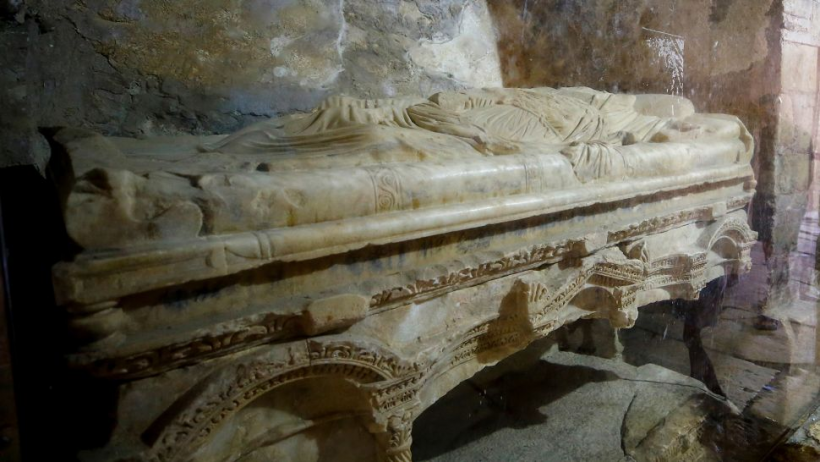As Halloween ends, the Christmas season officially starts, and one of the most loved images of the holidays is Santa Claus, which was inspired by Saint Nicholas. He was a Roman saint that helped the poor by giving gifts, especially to children.
Archaeologists in the southern region of Turkey have recently discovered the ancient burial site of Father Christmas himself, technically referred to as St. Nicholas, but whose contemporary moniker of Santa Claus, Saint Nick, as well as Kris Kringle are familiar to youngsters all over the world.
Though scientists supposedly know that the saint's remains were buried around the fourth century A.D. The saintly man's remnants were taken roughly 700 years after he died, therefore the exact location where he was initially placed was unknown. Now, signs acquired during a fresh excavation of this church, such as the ecclesiastical building's resemblance to the Church of the Holy Sepulchre in Jerusalem as well as the positioning of a fresco representing Jesus, point to the exact location of St. Nick's body, as reported by Good News Network.
The Saint During His Living Years
Demre, a contemporary town on Turkey's southern coast, is home to the Church of St. Nicholas, which was founded in A.D. In the fourth century A.D., the Christian saint reigned as bishop in 520 on top of an earlier church. During St. Nicholas' death but also burial there in A.D. 343, the little town, then known as Myra, became a major Christian pilgrimage site, as mentioned by St. Nicholas Center.
Little is documented about Nicholas' life, but stories galore: he is claimed to have saved three prostitutes, drastically cut a demon-possessed tree, revived three slain infants who were preserved in brine, and gotten into a physical fight throughout the First Council of Nicaea in A.D. 325 as per Britannica.
Despite this destruction, the basilica of St. Nicholas in Demre remains endured for over a millennium, with historical investigation commencing at the end of the twentieth century. Researchers unearthed the foundations of the first church, which had been submerged by several feet of sand and silt, as a result of this effort. Last Monday, Osman Eravşar, head of the Antalya Cultural Heritage Preservation Regional Board, revealed the discovery of St. Nicholas' tomb at the foot of a Jesus fresco.

The sarcophagus of Saint Nicholas is located in a church named after the saint in the down of Demre, Turkey. The saint's bones were stolen centuries ago, but the sarcophagus survived.
The Exact Location of Saint Nicholas' Tomb
In an interview with the Turkish news agency DHA (Demirören Haber Ajans), Eravşar stated that recent excavations had uncovered "the floor over which St. Nicholas' feet trod" from the first church.
According to Eravşar, the ancient burial location of St. Nicholas also has been discovered. Whenever the Bari contingent took the priest's bones in the eleventh century, they also pushed certain sarcophagi aside, disguising their original placement. As per Eravşar, his sarcophagus ought to be situated in a special spot, which is the component with three apses encased with a dome, where we have revealed the fresco portraying the situation in which Jesus is clutching a Holy book on his left side and holding the sign of praise to his dominant wrist. A natural stone flooring mostly with Greek words for "as grace" might mark his accurate burial site.
The form of the church building lends support to that theory. The Church of St. Nicholas in Myra, like the Church of the Holy Sepulcher, has an unfinished dome on top. The dome was never finished when it was repaired by Emperor Alexander II of Russia in the 1860s. This incomplete dome might have been a deliberate attempt to connect St. Nicholas to the story of Jesus' crucifixion and passage into heaven.
RELATED ARTICLE: Archaeology Dig Reveals 2,000 Year Old "Fast-Food" in Pompeii
Check out more news and information on Archaeology in Science Times.



![Earth's Quasi-Moon Kamo‘oalewa Could Originate From Lunar Surface Not Asteroid Belt [Study]](https://1721181113.rsc.cdn77.org/data/thumbs/full/53275/89/56/50/40/earths-quasi-moon-kamo-oalewa-could-originate-from-lunar-surface-not-asteroid-belt-study.png)










